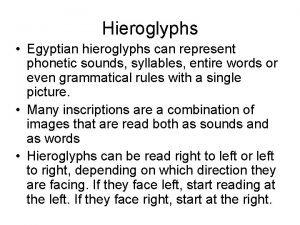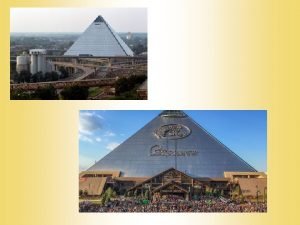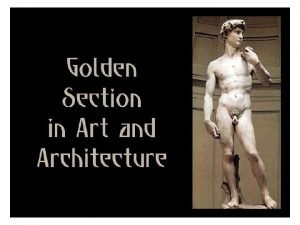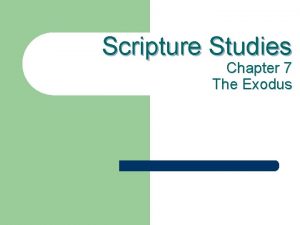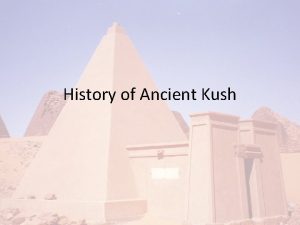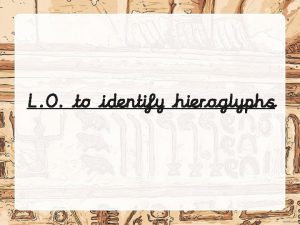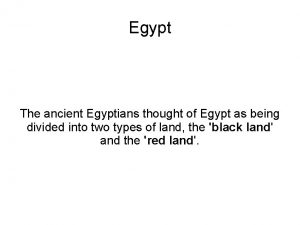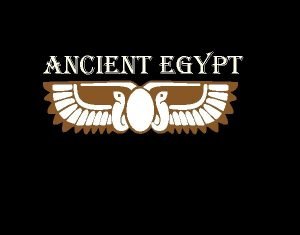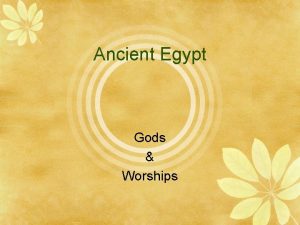Ancient Egypt Hieroglyphs The ancient Egyptians composed names









- Slides: 9

Ancient Egypt

Hieroglyphs The ancient Egyptians composed names for everything in their world using picture symbols known as hieroglyphs. Each picture represented a word – there was no alphabet. Means ‘sacred writing’. DID YOU KNOW that there were over 700 hieroglyphic pictures!

Hieroglyphic Symbols

Write like an Egyptian

Scribes People who could read and write in hieroglyphs were known as scribes. Scribes were highly respected figures in ancient Egypt. This is because not many people could write or read hieroglyphs.

Scribes wrote on papyrus, which is was a thick paper that was made from a papyrus plant, or carved into stone. They used fine brushes made of plant fibres. Black ink was made from a mixture of soot and water, and made coloured ink using different materials such as clay.

Scribes Normally, only the sons of scribes were trained to read and write in hieroglyphs and it often took them up to years to master these skills. Scribes had to know different styles of writing which were required for different sorts of documents. A scribe was considered one of the most important and privileged jobs in ancient Egypt as they brought security (protection of pharaohs in the afterlife) and power (making reports, keeping accounts and recording events).

The Rosetta Stone was found in 1799 by French soldiers in a small village in Egypt called Rosetta. Upon the stone were three scripts – hieroglyphic, demotic and Greek so that priests, government officials and rulers of Egypt could all read what it said. Many people tried to decipher or understand hieroglyphs through the study of this stone.

Jean-Françios Champollion After many years of studying the Rosetta Stone and other examples of ancient Egyptian writings, Jean. Françios Champollion deciphered hieroglyphics in 1822. This allowed historians to understand ancient Egyptian life like never before. Much of what were known about ancient Egyptians we have learnt through reading hieroglyphs.
